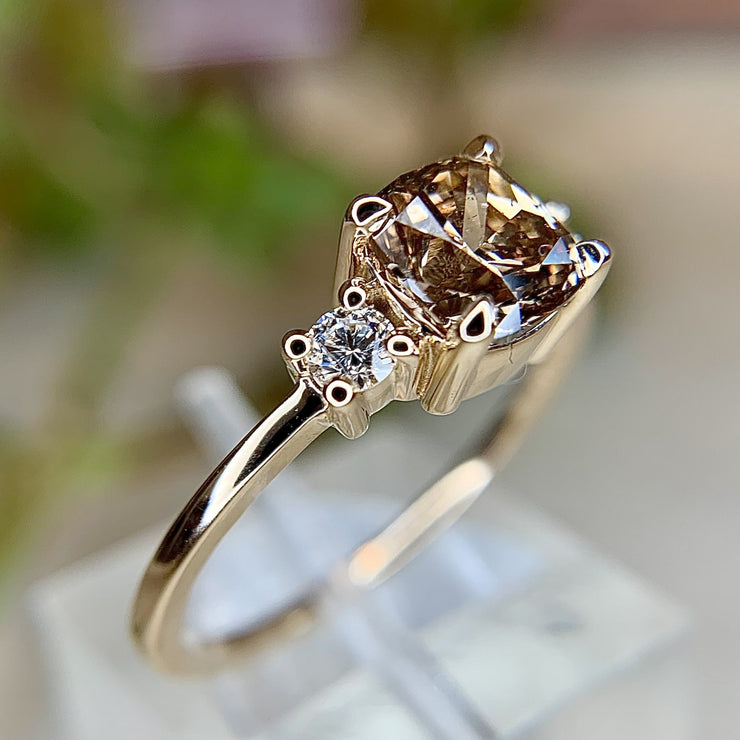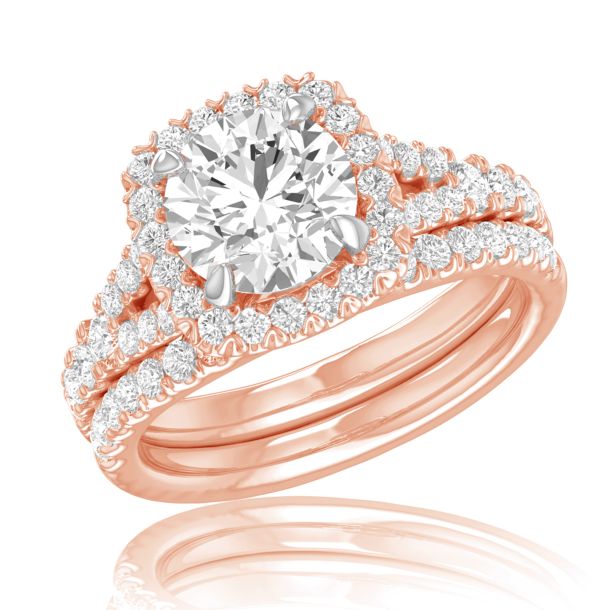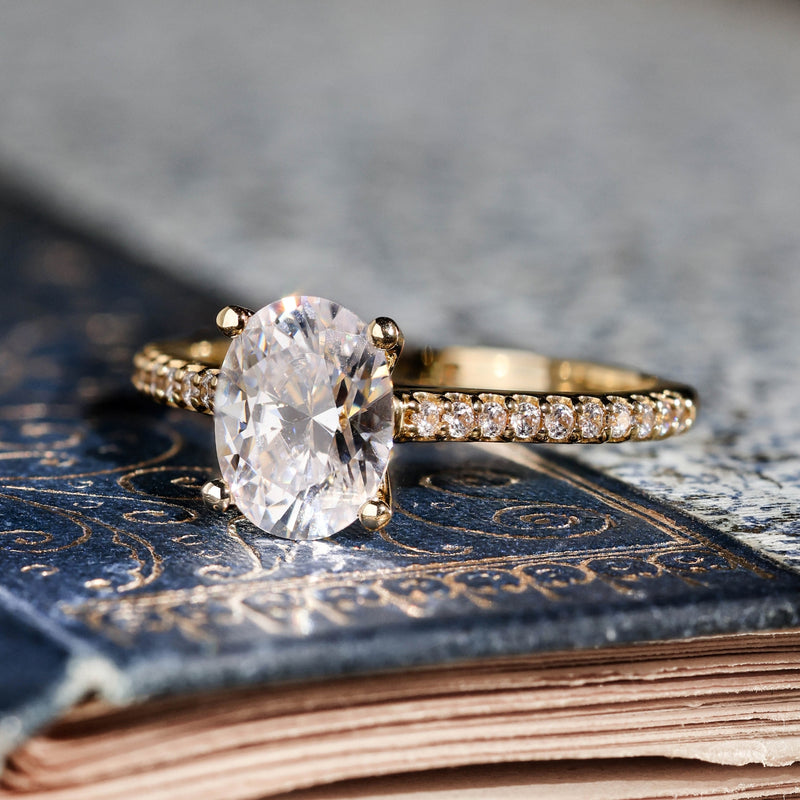Why Lab Grown Diamond Involvement Rings Are the Perfect Option for Eco-Conscious Couples
Lab-grown Diamond engagement rings present an engaging choice for pairs who prioritize sustainability. These rubies use a striking alternative to typical extracted stones, considerably minimizing environmental injury. They are developed using advanced techniques that ensure both high quality and radiance. As awareness of moral sourcing expands, several couples are reevaluating their selections. What ramifications does this change have for the future of the Diamond sector?

The Ecological Impact of Traditional Diamond Mining
Although Diamond mining has long been commemorated for its appeal and eminence, the ecological consequences of traditional mining methods are increasingly worrying. The removal of diamonds often involves considerable land interruption, resulting in logging and environment loss for plenty of varieties. Furthermore, the process consumes large quantities of water, which can deplete regional sources and negatively affect surrounding communities. Hazardous chemicals made use of in mining operations can pollute neighboring water resources, even more threatening both human populaces and wild animals.
Moreover, the carbon footprint linked with moving mined diamonds contributes to the overall environmental toll. The hefty equipment and tools required for mining operations contribute greatly to greenhouse gas discharges. As awareness of these issues grows, many customers are starting to wonder about the sustainability of conventional Diamond sourcing. This change in point of view highlights the immediate demand for even more eco-friendly choices, such as lab-grown diamonds, which promise to minimize the environmental effect while keeping the appeal and value of Diamond precious jewelry.
The Refine of Developing Lab-Grown Diamonds
Lab-grown rubies are developed with 2 main methods: High Pressure Heat (HPHT) and Chemical Vapor Deposition (CVD) The HPHT procedure mimics the natural problems under which rubies develop in the Planet's mantle. It involves subjecting carbon to extreme stress and temperature, causing the crystallization of carbon atoms right into Diamond structures. On the other hand, the CVD method permits the development of rubies in a controlled environment. This technique utilizes a gas mix containing carbon, which is invigorated to create plasma, enabling carbon atoms to down payment onto a substrate and grow layer by layer right into Diamond crystals.
Both approaches produce rubies that are chemically and literally identical to all-natural diamonds - lab grown diamond engagement rings. The selection of method typically depends on the preferred qualities and size of the final gem. This cutting-edge strategy to Diamond development not only offers a sustainable choice yet additionally enables for better openness in the sourcing of products
Quality and Sparkle of Lab-Grown Diamonds
While numerous might assume that lab-grown rubies vary in high quality from their all-natural counterparts, they actually display equivalent brilliance and visual appeal. Lab-grown rubies are created making use of sophisticated modern technology that duplicates the all-natural problems under which rubies develop, causing rocks that possess the same physical and chemical residential properties. These diamonds accomplish the same extraordinary quality and shade grading as mined diamonds, making them tantamount to the nude eye.
In regards to sparkle, lab-grown diamonds commonly present remarkable light efficiency due to their precision-cut elements. The strenuous quality assurance during production guarantees that these diamonds satisfy high criteria, boosting their visual appeal. Additionally, they are available in a variety of dimensions and shapes, permitting pairs to find the perfect ring to match their individual design. Eventually, lab-grown diamonds supply a charming mix of charm and top quality, making them an appealing selection for engagement rings.
Moral Factors To Consider in the Diamond Sector
As customers end up being increasingly knowledgeable about the moral ramifications bordering Diamond sourcing, the conversation around the Diamond market has actually shifted markedly. Issues about dispute diamonds, usually referred to as "blood rubies," have motivated ask for better openness and accountability in mining practices. These rubies are extracted in battle zone and marketed to finance armed dispute, elevating major ethical questions for customers. In addition, the ecological effect of conventional Diamond mining has actually come under analysis, with problems such as environment devastation and water pollution regularly highlighted.
In response, several have actually transformed to lab-grown rubies as an extra moral alternative. These rocks are created in controlled environments, getting rid of the dangers associated with mining. Subsequently, lab-grown diamonds attract consumers seeking to make accountable choices that align with their values. check my source The expanding demand for ethical practices continues to reshape the Diamond industry, pushing for sustainable and gentle sourcing methods.
Cost-Effectiveness of Lab-Grown Diamonds
Lab-grown rubies provide an engaging option for consumers seeking cost-effective involvement rings - lab grown diamond engagement rings. Valued substantially reduced than their all-natural counterparts, they supply exceptional value for cash without giving up high quality or appearance. This affordability makes lab-grown rubies an appealing choice for budget-conscious pairs
Reduced Price Point
Lots of couples are finding that deciding for lab-grown Diamond interaction rings can considerably decrease their general costs without compromising quality or elegance. These diamonds commonly set you back 30% to 50% less than their mined equivalents, making them an attractive option for budget-conscious consumers. The cost advantage develops from lower production expenses and a much more reliable supply chain, which removes the costs linked with mining. Therefore, couples can invest in bigger stones or even more complex setups, boosting the total aesthetic of their rings. This price not only permits a more customized option yet additionally straightens with the worths of eco-conscious couples who focus on sustainability while staying monetarily savvy. Lab-grown diamonds supply a perfect blend of elegance and economy.
Worth for Money
The cost-effectiveness of lab-grown diamonds prolongs beyond their first price, supplying phenomenal value for cash. Unlike natural diamonds, lab-grown alternatives can be as much as 40% cheaper while preserving the exact same physical and chemical residential or commercial properties. This affordability allows pairs to spend in larger or higher-quality rocks without surpassing their spending plans. The resale value of lab-grown rubies is progressively enhancing, making them an extra viable choice for future economic considerations. Additionally, lab-grown rubies commonly include lower ecological and honest expenses, giving pairs with peace of mind. By selecting lab-grown rubies, eco-conscious pairs not only conserve money however additionally add to sustainable techniques, enhancing their general value proposal in the jewelry market.

Personalization Options for Lab-Grown Engagement Rings
Exactly how can pairs assure their involvement ring shows their special visit the site romance? Modification options for lab-grown Diamond engagement rings supply a perfect option. Pairs can select from various Diamond forms, consisting of round, princess, or oblong, permitting them to choose a style that resonates with their personal aesthetic.
Furthermore, they can decide on the setting-- be it jewelry, halo, or vintage-inspired-- guaranteeing the ring matches the Diamond's radiance. Metal options, such as white gold, yellow gold, or climbed gold, further boost customization, satisfying individual tastes.
Furthermore, pairs can incorporate purposeful engravings, including an emotional touch that signifies their bond. With these considerable modification choices, lab-grown Diamond engagement rings not only symbolize a pair's love yet also reflect their worths, making them a best selection for eco-conscious partnerships. Inevitably, these rings end up being a true depiction of their one-of-a-kind journey with each other.
Regularly Asked Inquiries
Exactly How Do Lab-Grown Diamonds Contrast to Natural Diamonds in Worth?
Lab-grown rubies typically set you back 20-40% less than natural rubies, offering similar top quality and look. Their lower cost point makes them an attractive option, especially for budget-conscious customers seeking ethical and lasting choices in precious jewelry.

Are Lab-Grown Diamonds Much More Durable Than All-natural Diamonds?
Lab-grown rubies possess the exact same physical and chemical residential properties as natural diamonds, consisting of longevity. Both kinds rack up an ideal 10 on the Mohs range, ensuring that lab-grown rubies are equally immune to scraping and damage.
Can Lab-Grown Diamonds Be Marketed Quickly?
Lab-grown rubies can be marketed, yet their market demand varies contrasted to natural rubies. While some customers appreciate their ethical origins, others may like natural options, potentially affecting resale worth and convenience of transaction.
What Are the Treatment Recommendations for Lab-Grown Diamonds?
Lab-grown diamonds require routine care to maintain their luster. Cleaning up with moderate soap and warm water, utilizing a soft brush, and staying clear of extreme chemicals will certainly assist protect their glimmer and honesty for many years ahead.
Exist Any Kind Of Certifications for Lab-Grown Diamonds?
Lab-grown rubies can be certified by trusted organizations such look here as the Gemological Institute of America (GIA) and the International Gemological Institute (IGI) These certifications ensure quality, authenticity, and adherence to market requirements for lab-created gemstones.
Both approaches generate diamonds that are chemically and physically identical to all-natural rubies. Lab-grown diamonds are created utilizing advanced modern technology that duplicates the all-natural problems under which diamonds develop, resulting in rocks that possess the same physical and chemical properties. Lab-grown rubies commonly set you back 20-40% less than natural rubies, providing comparable quality and appearance. Lab-grown rubies have the same physical and chemical buildings as all-natural rubies, including sturdiness. Lab-grown diamonds can be marketed, but their market demand varies contrasted to natural rubies.